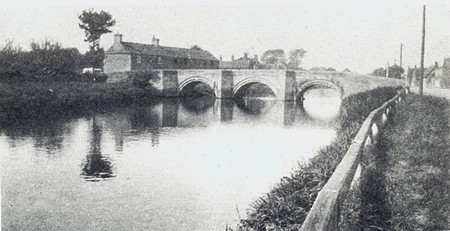|
Deeping Gate bridge
Bridges date back to the earliest times when even the most primitive communities created crossings over rivers and streams following their favourite paths to make hunting and gathering easier, using whatever materials there were to hand such as fallen trees. These constructions were primitive until the Romans came up with an architectural device over 2,000 years ago to carry a path over a narrow width known as the Roman arch, thus providing the fundamental principle on which all future bridges were based. The pack horse bridge is one such development, specially built to carry pack horses loaded with side bags or panniers across a river or stream rather than take the long way round which could involve a diversion of many miles. Such bridges therefore have narrow masonry arches and low parapets in order not to interfere with the horse’s load and were often built on the trade routes across Europe. The design was also followed in England before the coming of the turnpike roads and canals in the 18th century and the Deeping Gate bridge which crosses the River Welland on the B1162 is popularly known by that name. This 17th century structure built mainly of limestone has three arches with half round parapets and stands on the parish boundary between Deeping Gate and Deeping St James. Refuges or alcoves were placed over each of the cut-waters or forward edges of the piers where, as the name implies, horses loaded with goods could wait to enable carts and carriages to pass. The bridge dates from 1651 and is now Grade II listed as being of historic and architectural importance although the middle arch has a brick vault and appears to have been partially rebuilt. The bridge was built in an age when horses for transport in all its forms ruled the highways and the structure is no longer practical for today’s continual streams of motorised traffic, the roadway over it narrowing to a mere 13 feet wide without a footpath and it now carries a weight restriction of 7.5 tonnes. Despite this precaution, the stone structure has been at risk from heavy vehicles on several occasions, the last incident being in January 2015 when part of the parapet on the Deeping St James side was demolished by a lorry which left debris scattered over the road. The damage has since been repaired and safety cones placed along the carriageway as a warning to vehicles passing this way but as long as careless driving persists, further mishaps would appear to be inevitable.
Return to Deeping St James
Go to: Main Index Villages Index |



